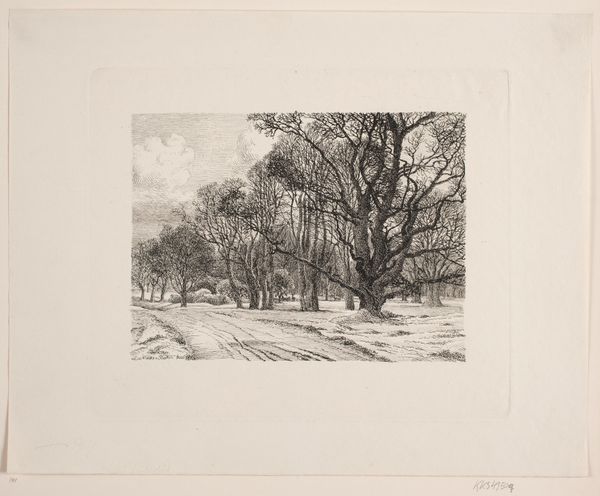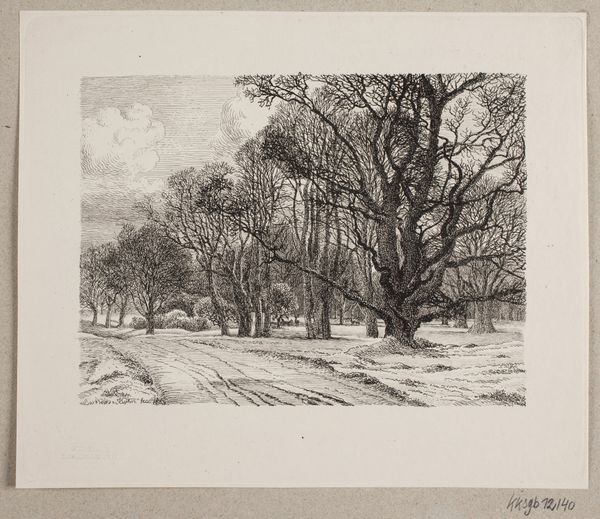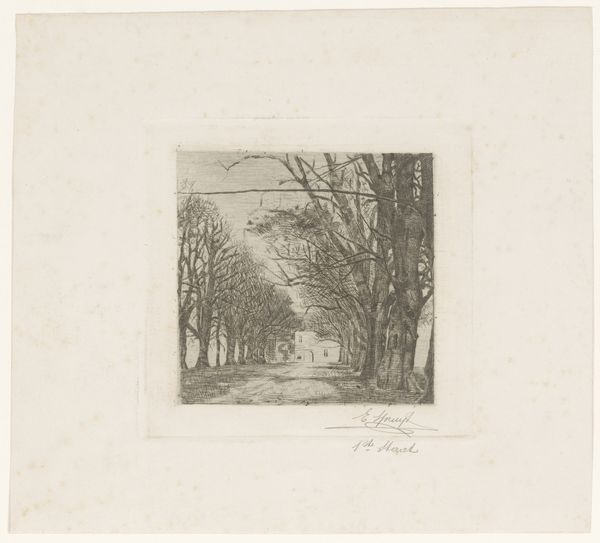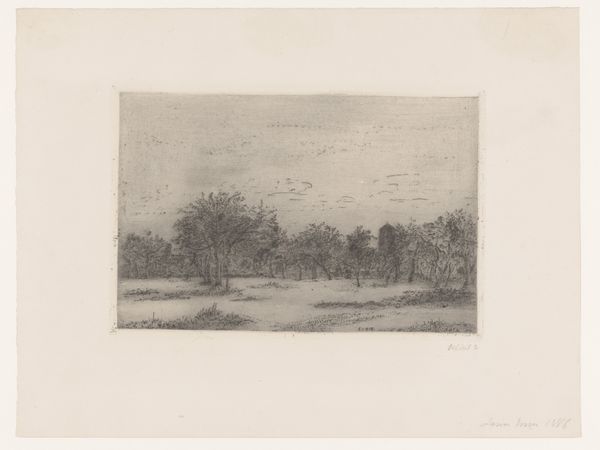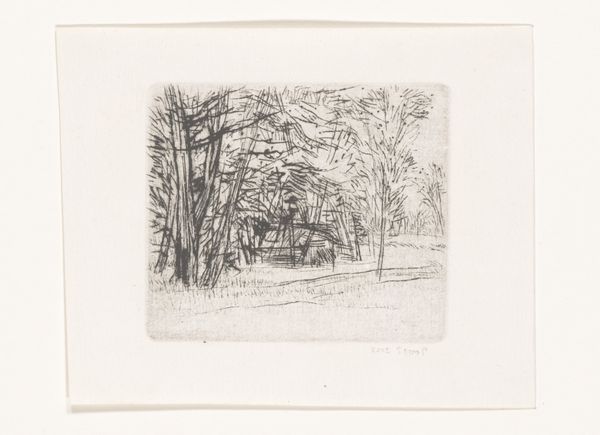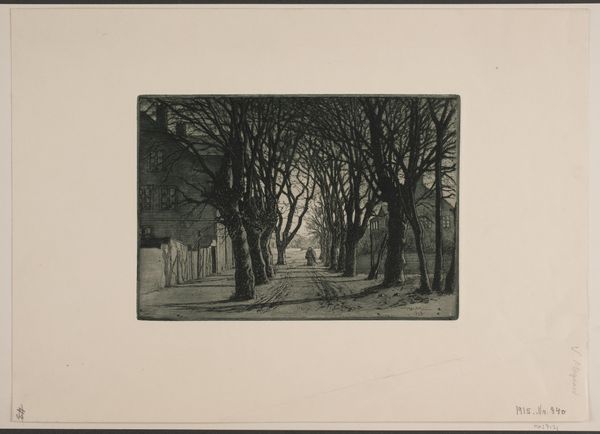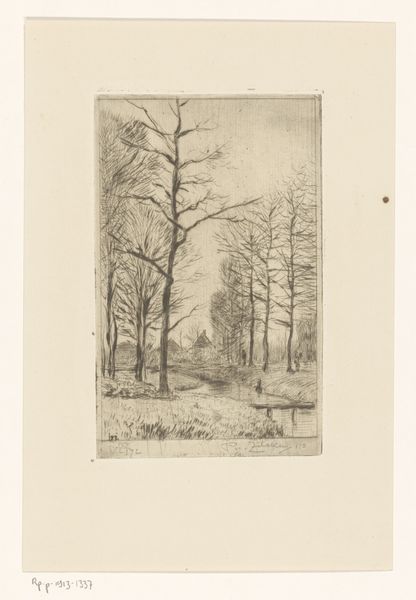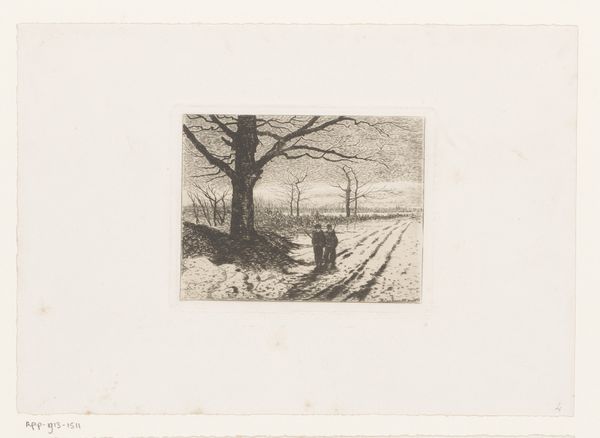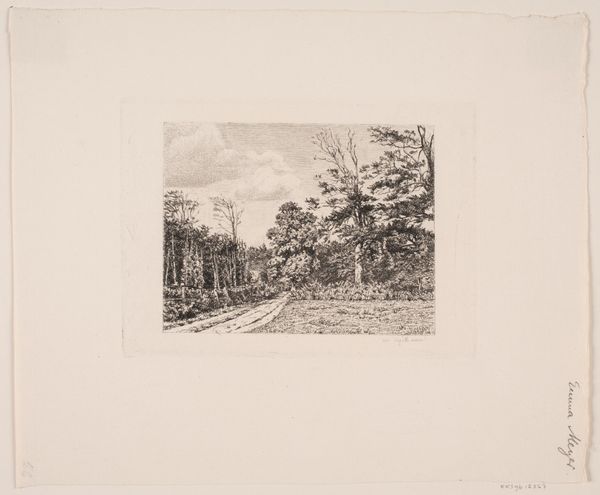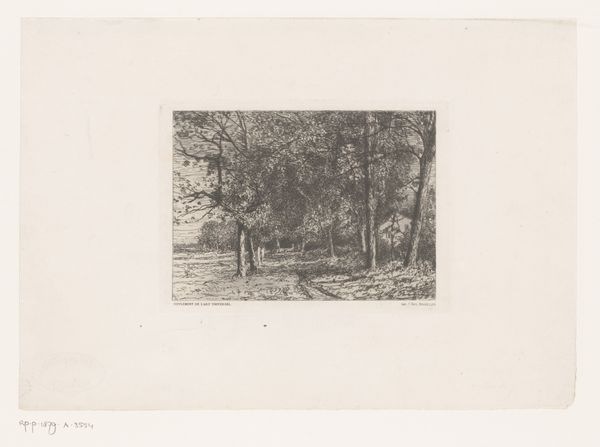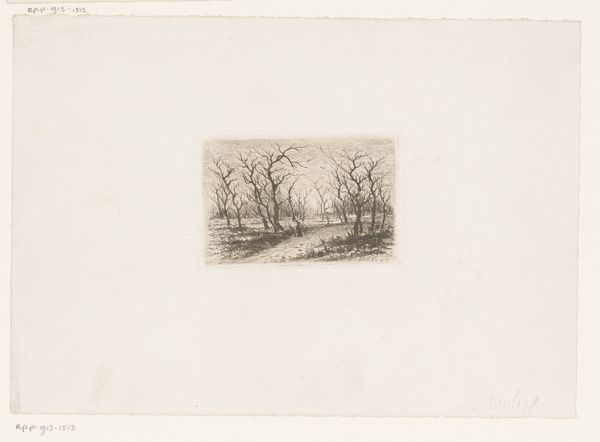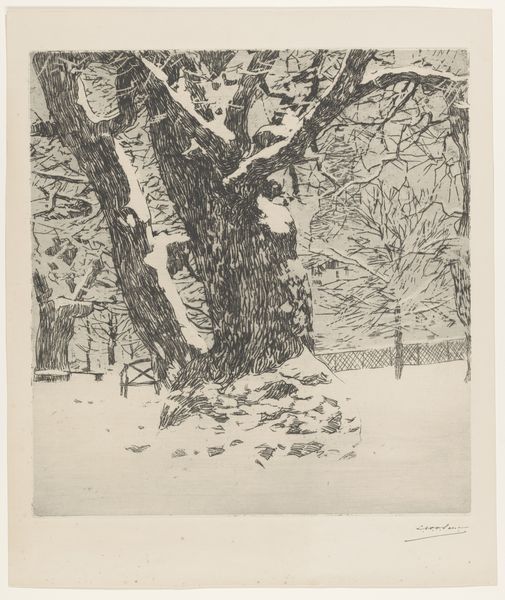
print, etching
# print
#
etching
#
landscape
#
etching
#
northern-renaissance
#
realism
Dimensions: 186 mm (height) x 225 mm (width) (bladmaal)
Curator: Vilhelm Kyhn’s "Vinter i skoven," dating back to 1866, offers us a compelling glimpse into a winter forest scene, rendered through the intricate technique of etching. What are your initial thoughts? Editor: There's a striking sense of melancholy and stillness evoked. The starkness of the trees against what appears to be a snow-covered ground creates a powerful atmosphere. Almost like the skeletal remains of life. Curator: I'm drawn to the process itself, the labor that went into creating this landscape. Think of the painstaking work required to incise the lines on the plate, control of the acid bath, the physical act of printing—it speaks to a relationship with nature through the hand. How the production defines this moment. Editor: Absolutely. That labour manifests as intricate detail, creating depth in what would otherwise be flat. But it goes beyond the technique: bare trees are a classic symbol of death and dormancy, suggesting a pause in the cycle of life, a moment of reflection before renewal. I'm curious about how this etching participated in the wider culture that created and circulated the message. Curator: Kyhn was very invested in portraying landscapes that reflected Danish national identity and the character of the local people. The scale of production and the dissemination of these landscapes helped develop those values, particularly during this period when national identity was intensely negotiated and challenged by the political context. Editor: Yes, this reminds me of the deep connection between humans and nature. The winding road pulls us into the unknown winter woodland; a very specific cultural and emotional weight emerges when we contemplate what nature is communicating, or, is believed to be communicating, during the cold seasons. Curator: Right, it makes me consider how Kyhn's art might reflect or resist industrialization trends by grounding his practice on traditional artisanship and material means to capture these iconic winter forest scenes. Editor: Ultimately, “Winter in the Woods” is a meditation on temporality, a captured instance speaking to continuous emotional and cultural undercurrents. It provides enduring images through distinct symbols for individual contemplation and cultural exchange. Curator: Agreed, the materiality of the print reminds us to examine these seemingly pastoral scenes by questioning what they communicated about contemporary society and labor.
Comments
No comments
Be the first to comment and join the conversation on the ultimate creative platform.
